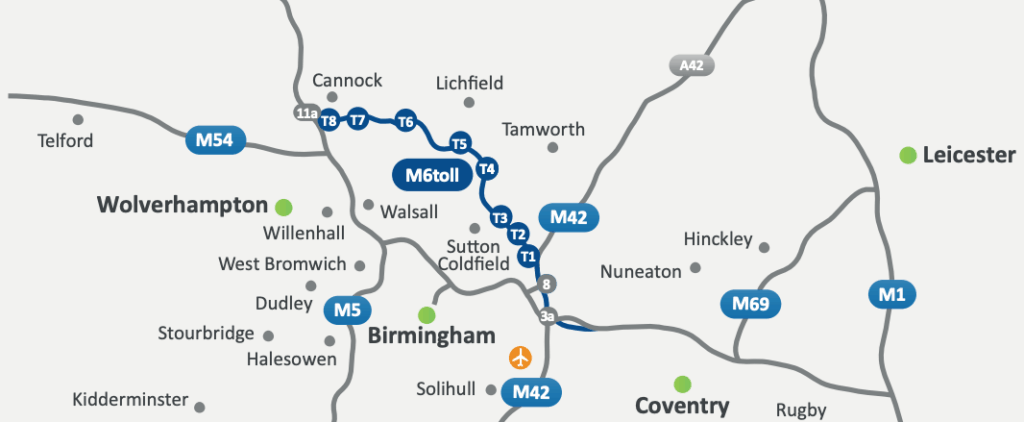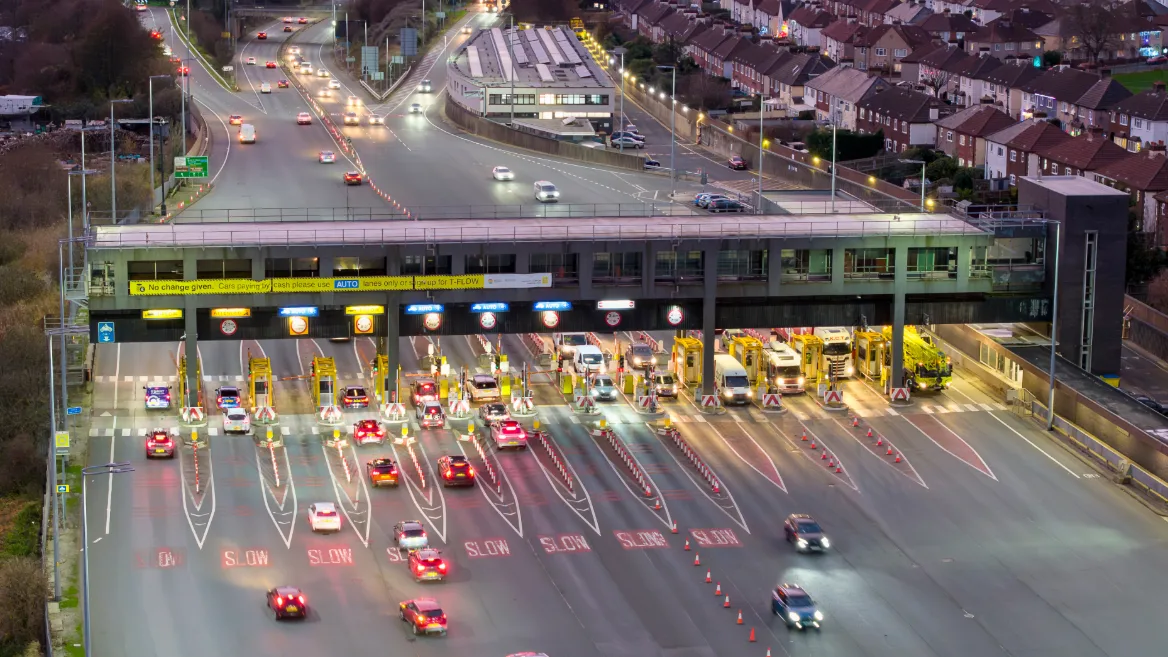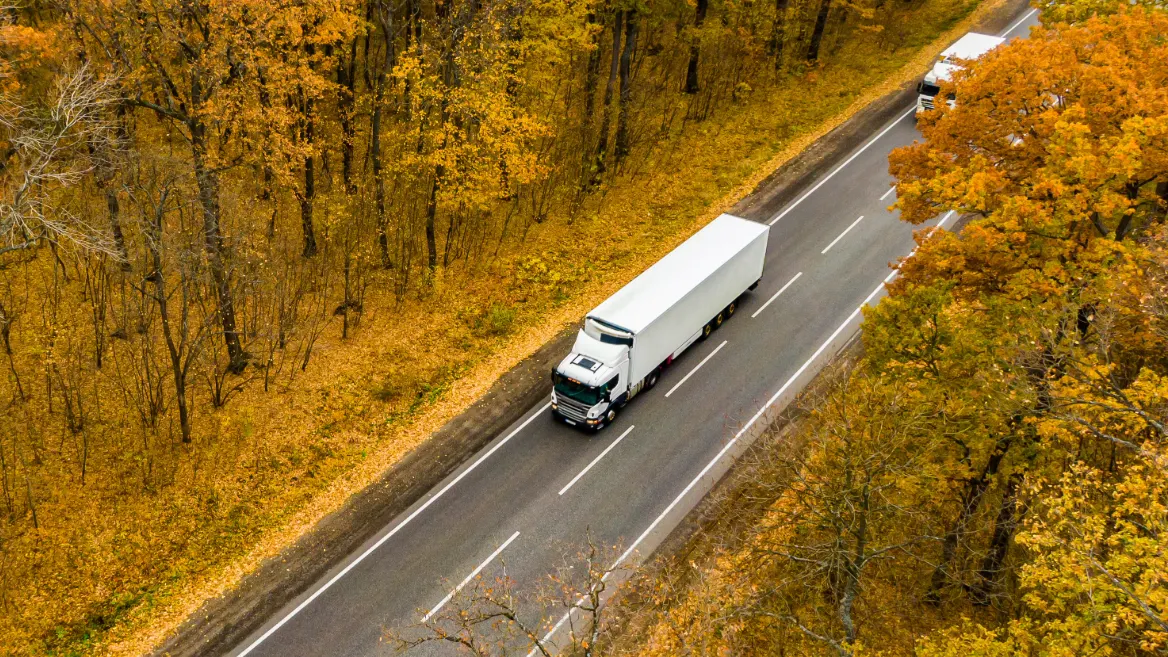The UK’s road network has seen major investment over the past two decades. Smart motorways and toll roads were meant to keep vehicles moving and ease congestion, but for hauliers managing tight margins, the picture isn’t always clear.
While some upgrades bring benefits, others add stress, especially when routes change often or safety features feel lacking. This article looks at what’s working, what isn’t, and what hauliers really need from the roads they use every day.
What we’ll cover
Fleets, bookings, subcontractors, compliance & payments.
With HX, you can manage them all in one place.
What are smart motorways and how do they affect hauliers?
Smart motorways use technology to manage traffic flow. Instead of widening roads, they rely on overhead gantries, variable speed limits, and real-time lane control to keep vehicles moving during peak times.
How do smart motorways work?
Cameras and sensors monitor traffic. When volume increases, signs reduce speed limits gradually to prevent stop-start driving. In some cases, the hard shoulder becomes a permanent extra lane.

This method helps prevent traffic bunching, where vehicles slow down sharply due to sudden braking ahead. By easing traffic more evenly across all lanes, smart motorways aim to avoid full stops.
Which motorways are smart motorways?
Smart motorway stretches currently operate on parts of the M1, M3, M4, M5, M6, M25, and M62.
Some use “all-lane running”, while others activate the hard shoulder only during congestion.

For hauliers, this lack of consistency adds planning headaches, especially for fleets covering long distances across multiple regions.
Who invented smart motorways?
They were introduced in 2006, starting with a trial on the M42. Developed by engineers at what’s now National Highways, they were based on European traffic control systems. Since then, the network has grown—but not without criticism, especially from those in freight and logistics.
Why do many hauliers avoid smart motorways?
The idea behind smart motorways was to ease congestion, but many drivers remain unconvinced. A 2023 government decision to cancel all new projects reflected widespread safety concerns. Public confidence is low, with repeated criticism that the removal of the hard shoulder leaves drivers exposed in emergencies.
For hauliers, these risks are magnified. An HGV cannot easily reach an emergency refuge area, particularly when fully loaded or carrying abnormal freight. The Road Haulage Association (RHA) has argued that leaving heavy vehicles stranded in live lanes creates unacceptable risks for drivers and recovery teams.
This has led many fleets to actively avoid smart motorways where possible. Route planning software allows dispatchers to exclude these sections, though doing so often adds mileage, cost, and delays.
Some operators have gone further by adopting company policies that prohibit smart motorway use for certain journeys, especially when carrying hazardous or oversized cargo.
How to avoid smart motorways
Operators that wish to bypass smart routes can use logistics tools that flag affected stretches. The National Highways live map also shows which motorways operate under smart systems.
However, avoiding these routes can mean longer journey times and higher fuel use, affecting fleet fuel efficiency and scheduling.
For small haulage businesses already working with thin margins, this creates a difficult trade-off.
Are toll roads a time-saver or added cost?
Toll roads offer smoother routes in theory. But for many hauliers, the decision to use them depends on more than just traffic flow.
M6 Toll: a haulier-friendly route?
The M6 Toll bypasses a heavily congested section of the West Midlands. It’s wide, rarely slows down, and avoids regular roadworks on the main M6. For time-sensitive jobs, it can be worth the cost.

Still, many operators avoid it. Regular use can push up monthly costs quickly—especially for fleets managing empty return journeys or operating under fixed-price contracts.
Some clients refuse to pay for toll usage. Others request it only when absolutely necessary. A few firms have arrangements that offer reduced rates, but these aren’t widely available.
Toll charges vs real-world margins
Tolls may save time, but they don’t always save money. Fuel prices, labour, and maintenance already stretch budgets thin. Add tolls into the mix, and it often tips the balance the wrong way.
And not all toll routes guarantee a smooth journey. Congestion still happens, accidents can block lanes, and variable HGV speed restrictions often apply regardless of road quality.
For many planners, unless a toll road helps avoid penalties or save on other costs, it’s simply not worth the added spend.
What’s next for UK road funding?
The debate around smart motorways has moved attention onto how the UK funds and maintains its road network.
With cancelled projects and rising costs, operators want to know what comes next and how it will affect freight.
Reinvestment in traditional upgrades
After halting new smart motorway schemes, ministers now face pressure to redirect funding into more conventional improvements. Suggestions include widening pinch points, resurfacing roads, and upgrading junctions to reduce congestion.
For hauliers, these upgrades would be welcome, as smoother roads and fewer bottlenecks support safer, more predictable journeys.
Road pricing and mileage-based charging
At the same time, falling fuel duty revenues due to EV adoption have reignited discussion of road pricing. One option under review is mileage-based charging, which would see operators pay per mile rather than at the pump.
This model would extend beyond existing toll roads, potentially raising costs for fleets that rely on long-distance travel.
Industry reaction to new models
Logistics UK has argued that any future system must be transparent and predictable so firms can budget with confidence.
The RHA has taken a harder line, warning that freight operators must not be penalised for their reliance on road travel and calling for discounts or exemptions where appropriate.
Congestion pricing and modal shifts
Congestion pricing is already in place in some areas, including the Blackwall and Silvertown tunnels in central London.
If expanded, this approach could drive some firms to consider intermodal transportation as a practical alternative, particularly for longer domestic hauls.
But this would only work if investment in rail and depot infrastructure improves. Without that, the burden would continue to fall on hauliers.
What does a smarter network look like for hauliers?
1) Safer and more consistent smart motorways
To rebuild trust, the government must move away from “zombie motorway” schemes and focus on improvements that work in practice. The RHA has called for more emergency refuge areas, clearer signage, and an end to further hard shoulder removals.
Many HGV drivers highlight stress caused by inconsistent design and unclear rules. These issues could be addressed with better consultation and standardised layouts across the network.
2) Fairer toll road pricing
Hauliers also want toll roads to provide value. Right now, many fleets only use them when a client covers the cost. Discounts for regular HGV users or flexible freight pricing could encourage more operators to take advantage of quicker routes.
ANPR-based systems already work, but greater integration with fleet tools would help firms plan more effectively and keep spending under control.
3) Supporting environmental and compliance goals
A truly modern road network should also help hauliers meet operational and environmental demands. Live traffic data could feed into tools that track HGV carbon emissions, support fleet fuel efficiency, and simplify compliance with the HGV operator licence.
Clearer national standards would also support operators during DVSA fleet inspections, reducing uncertainty and proving compliance more efficiently.
What operators really want
Hauliers aren’t asking for luxury. They’re asking for safe, reliable, and fair roads that support the daily demands of modern freight.
That’s missing right now—but with the right changes, it’s achievable.
Conclusion: what’s working and what isn’t
Smart motorways and toll roads were meant to fix long-standing problems. And in some ways, they have.
But they’ve also introduced new ones, especially for hauliers already juggling complex logistics.
What’s needed now is a better balance between safety, practicality, and fairness. Hauliers want roads they can trust, charges they can budget for, and a system that values freight just as much as cars.
That’s not too much to ask.
Frequently asked questions
Why are smart motorways dangerous?
Smart motorways are considered to be dangerous because they remove the hard shoulder, which means breakdowns often happen in live lanes. That puts both the driver and other road users at risk, especially when recovery takes time.
Are toll roads cost-effective for UK hauliers?
Not always. While toll roads can reduce travel time, the cost per trip often outweighs the benefits—especially when running empty on return or when margins are tight.
Will road pricing replace toll roads in the future?
It’s likely. With falling fuel tax income, the government may move to mileage-based charges. These could work like toll roads, but on a broader scale affecting more operators.
How do hauliers plan routes to avoid toll costs?
Most use route planning tools that flag toll sections. In areas like the Dartford Crossing, some firms accept minor delays to avoid added costs unless speed is essential.
Is there enough investment in road safety for freight operators?
Some progress has been made, but many drivers still feel smart motorways lack proper safety features. Limited breakdown space, inconsistent design, and poor visibility remain common complaints.




